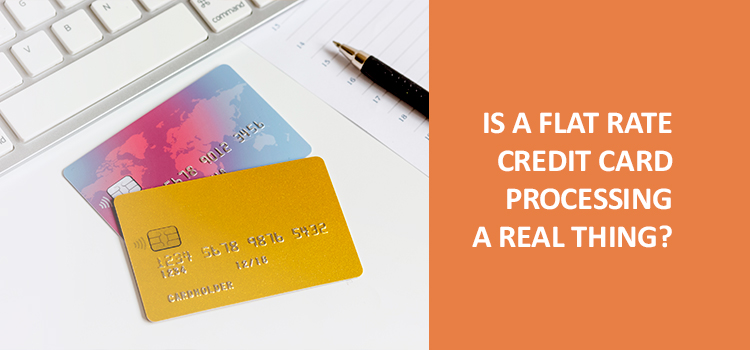Regardless of whether you are a freshman or a business shark, payment processing can still be controversial. Flat rate credit card processing is what merchants hear from every corner. It seems to be clear and fair price-wise. Nevertheless, as everything in the financial sphere, it has several nuances.
And though payment services evolve, there’s one thing that bothers business owners. That thing is processing rates. In most cases, it’s hard to understand the final credit card processing cost. In our last article, we’ve figured out that there’s no free credit card processing. So, merchants understand they need to pay. Anyway, the final amount stays unclear.
Taking this into account, let’s sort out what flat fee is, what parts it includes, and if there are alternatives. It’s our sincere belief that merchants should have a clear understanding of what they are going to pay. So, without further ado, let’s jump straight to the content.
What is a flat-rate credit card processing?
Nowadays, the flat rate is one of the most popular fee models in the processing industry. Nevertheless, you shouldn’t mix it up with the fixed fee. As such, let’s define what flat-rate credit card processing is.
Flate rate is a pricing model in the payment processing industry. It means that a payment processor charges a certain percentage of the transaction regardless of its amount.
Thanks to its policy, this model seems to be the easiest one to understand. It’s not exactly “one size fits all,” yet the flat rate implies to credit and debit cards, or any transactions’ type or volume.
How does flat fee work?
Though this fee type seems to be the easiest one to use, it’s not the cheapest one. First of all, it is composite. That means companies owners do not pay one figure only. Vice versa, the flat fee has three fees in it: interchange fee, network fee, and markup fee. Let’s have a closer look at all of them.

Interchange fee
Firstly, you should understand that the payment processor doesn’t receive the whole fee amount you pay. The first part goes to the issuing banks. And that would be an interchange fee. The issuing bank is the financial institution that has issued your client’s credit/debit card. For instance, it might be Deutsche Bank, Bank of America, Credit Agricole, and so on.
Nonetheless, you need to understand that though the payment processors pay the interchange fee to the issuing banks, credit card networks are the ones to establish and assess them. The interchange fee itself is the percentage and the fixed amount – for example, 1.9% plus $0.30.
Interchange fees can vary drastically. They are different from network to network. Moreover, they vary based on their nature. Here are some examples.
Visa
| Card Type | Interchange Rate (Swiped) |
| Credit Retail CPS | 1.510% + $0.10 |
| Credit Retail Rewards Traditional | 1.650% + $0.10 |
| Credit Retail Corporate | 2.100% + $0.10 |
Mastercard
| Credit Retail Consumer | 1.580% + $0.10 |
| Credit Retail Enhanced | 1.730% + $0.10 |
| Credit Retail Corporate | 2.500% + $0.10 |
Discover
| Commercial | 2.300% + $0.10 |
| Consumer | 1.560% + $0.10 |
| Credit Retail Corporate | 1.710% + $0.10 |
American Express
| Business Type | Amex Discount Rate |
| Restaurant | 3.50% + $0.05 |
| Retail | 2.89% + $0.10 |
| Supermarket | 2.100% + $0.10 |
As you can see, the fees do differ. That influences the end charge amount the payment processor will require. That’s why it’s vital for you, as a business owner, to conduct market research. It’ll show what payment cards your customers prefer to choose. Then the final processing costs won’t be too unexpected for you.
Network fee
Unlike the interchange, the network fee will go directly to the credit card network. There are four of them – Visa, Mastercard, American Express, and Discover. Also, you need to know that the network fee is not an interchange’s part. Moreover, you pay it on top of the interchange.
The network fee is a low rate. So, it commonly is 0.05%, which is much less compared to interchange.
Markup fee
And, finally, this is a part of the fee payment service provider keeps for itself. No matter what processing type the payment processor uses, it will include the payment for its services. Markup is usually the hardest one to evaluate.
Despite this fact, the markup fee is the only one you can negotiate because the credit card networks keep interchange & network fees fixed.

What are the benefits of flat-rate processing?
The main flat-rate merchant processing advantage is predictability. You can always calculate the processing cost. Simply put, you need to multiply your gross sales by the payment processor’s fee. That, surely, gives you lots of freedom for your financial planning and strategy.
This fee’s type also suits small businesses as it eliminates other concurrent fees like account fees, per-transaction fees, etc. On the contrary, easy doesn’t mean cheap. That’s why there’s another option you should know about.
Interchange plus vs. Flat rate
So, we’ve learned what flat-rate fees are. Once again, it’ll be an interchange fee + network fee + markup fee. Merchants see them as the fixed flat rate (e.g., 3.1%+$0.50).
At the same time, interchange-plus fees will use another scheme. So, the merchant pays a fee based on the following parts – the interchange fee itself, plus an additional amount on top of it. Commonly, it’s a percentage and a fixed amount, e.g., 0.60%+$0.30.
That means the interchange-plus fee looks like 2.5%+0.50%+$0.30. The very first part will vary depending on the credit network and business/transaction type.

Conclusions
All-in-all is a flat-rate credit card processing a real thing? Well, this question has plenty of sides merchants need to take into account. As a matter of fact, while one solution perfectly fits one company, another one may find it ineffective.
If you don’t have enough time to dig deep into this theme, the flat fee is the easiest option to choose from. You can plan your company’s spendings as you know what to expect.
Nevertheless, Ikajo’s main aim is to give merchants access to the information. We want you to know what fees are made of and how you can influence them. We are always open to the conversation and ready to provide the best fitting solutions to our customers. Feel free to fill in the form to ask more questions or create a merchant account.





